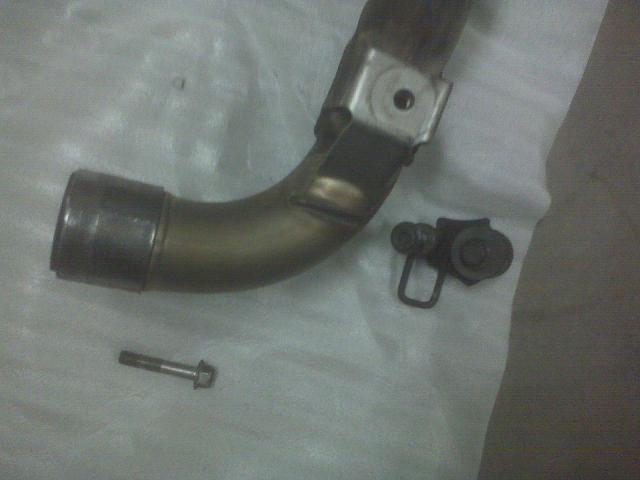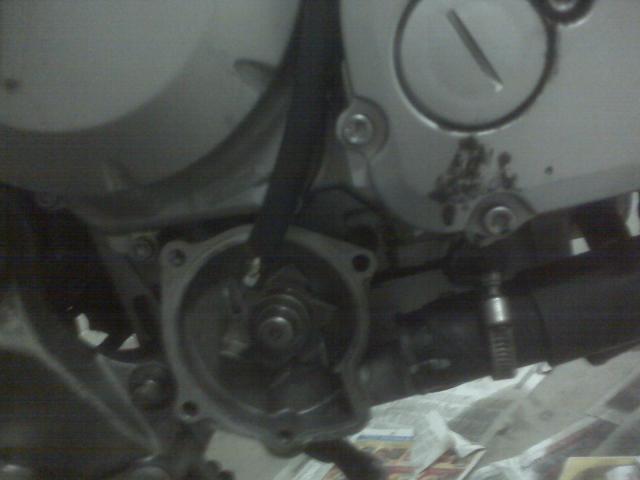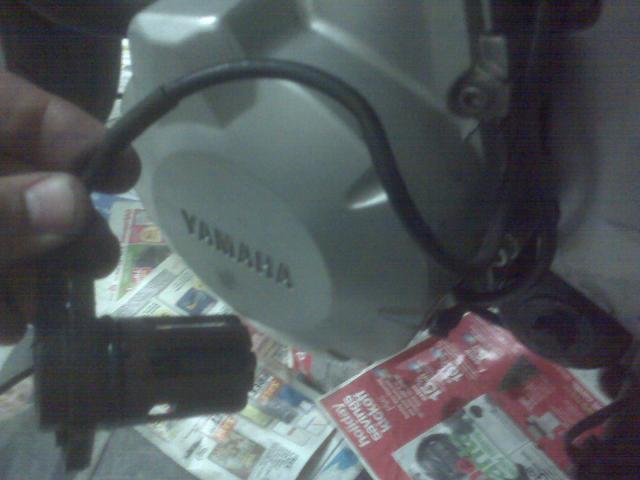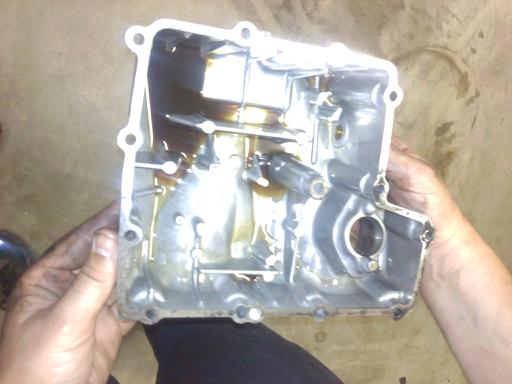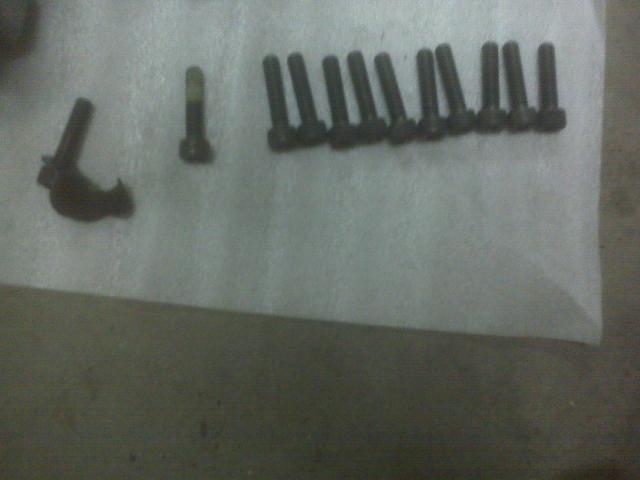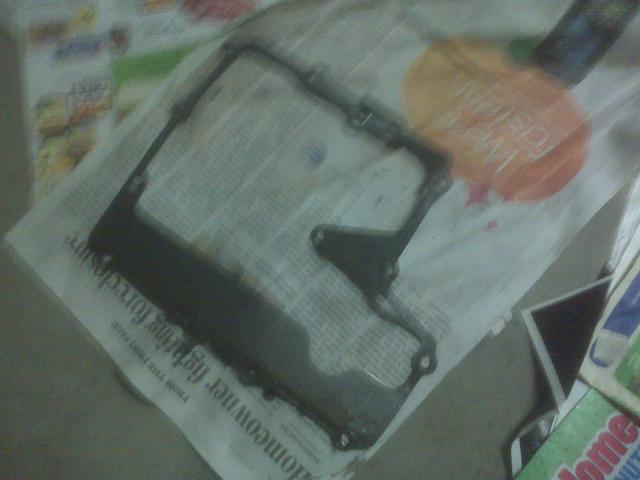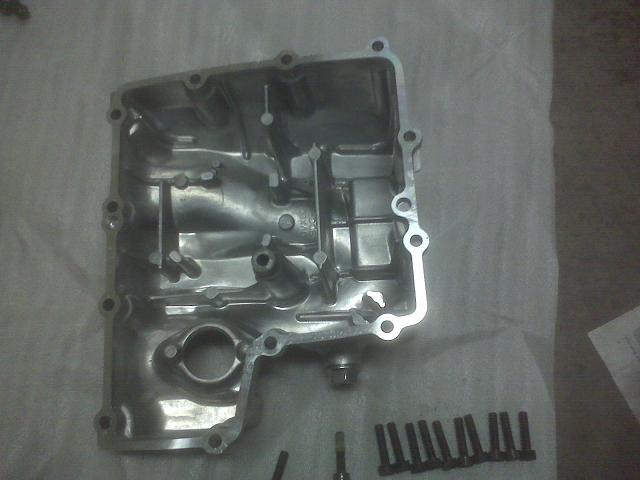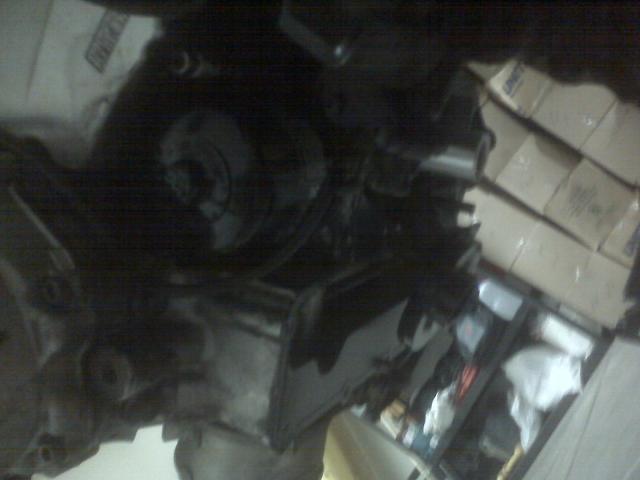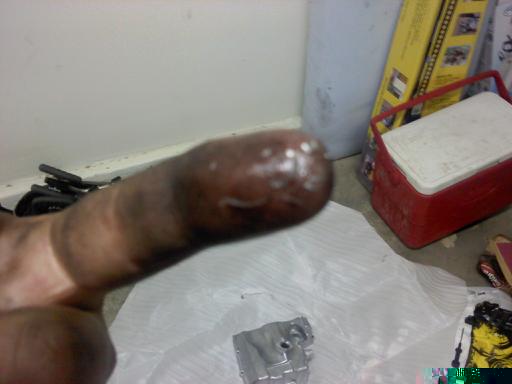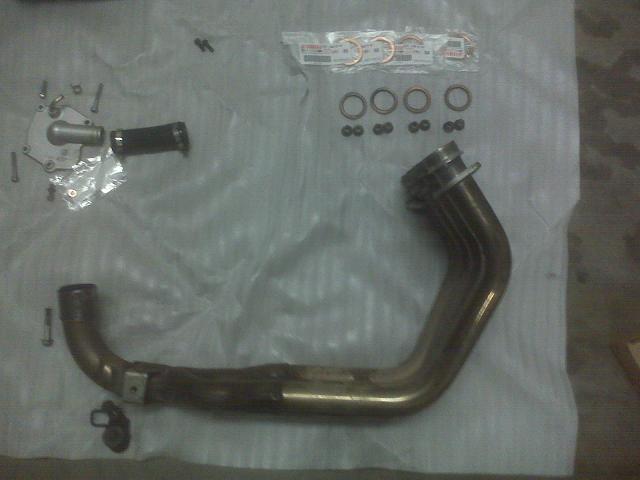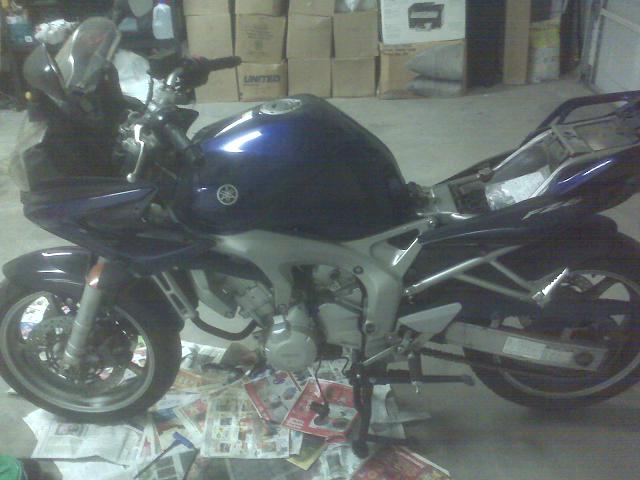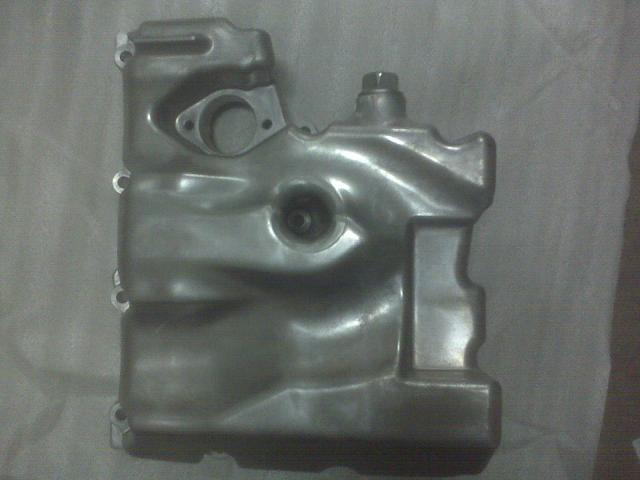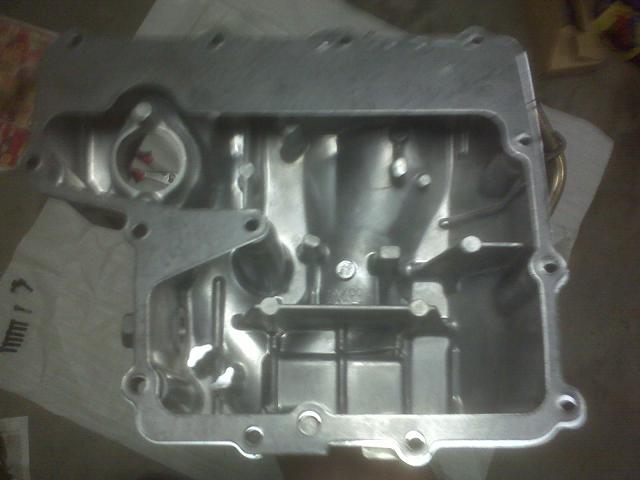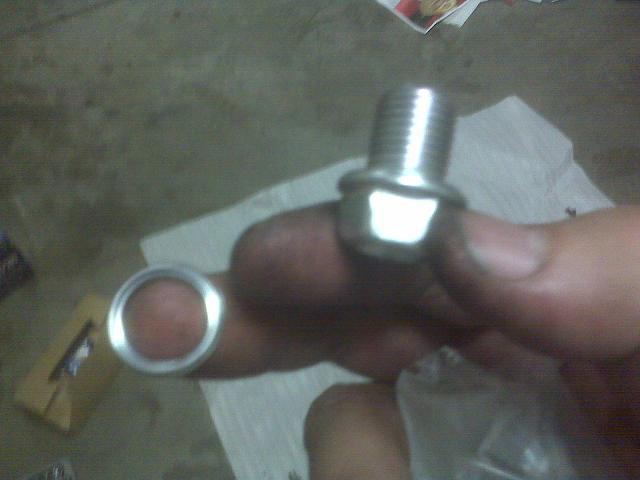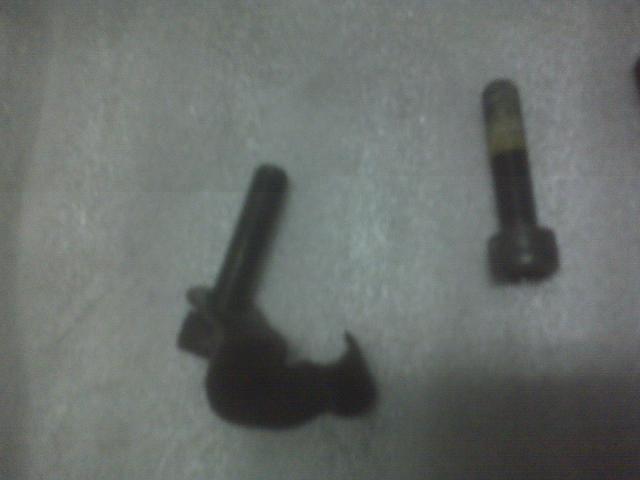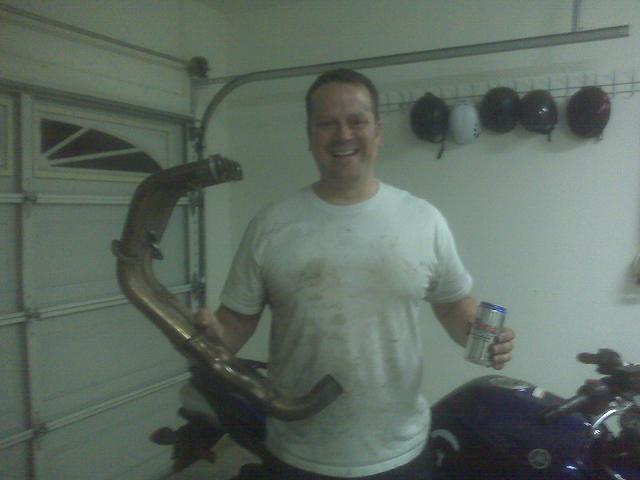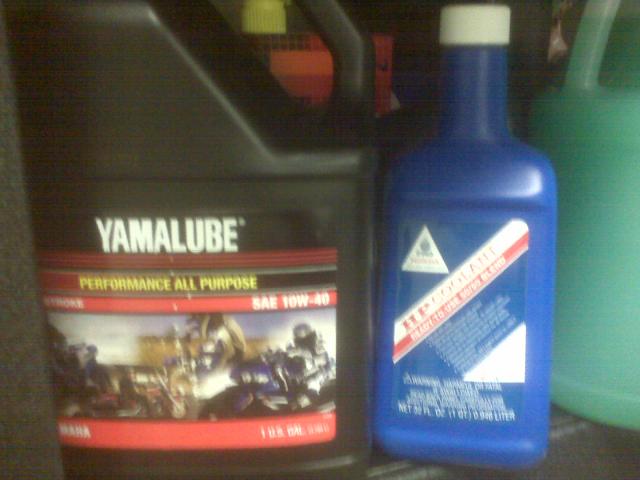blacksha
Junior Member
OK, so many of us have done this before, and many of us will not admit we did. But I cracked my aluminum oil pan changing the oil by overtightening the drain bolt. Lots of lessons to be learned here, never use a torque wrench as a breaker bar to break loose a bolt, and when you do use a torque wrench never trust it. Maybe most important, know the rule of gutentight (Good and tight). Just tighten it and tighten it good, being cautious when you tighten as you may be shocked when you do not know your own strength and the pan cracks. Obviously use metric tools. A friend of mine said maybe you do not need to go through so much work, removing the exhaust and water pump, but after reviewing my FZ6 service manual, reading a few posts out there, and looking at the problem at hand--it appeared to me it is actually probably a better idea, otherwise you might spend a lot of time fighting the removal of the oil pan, risking knocking out or bending some things inside your oil pan (and there are a few things in there you do not want to mess up)--I decided I would go the safest route and follow the rules. If anyone has done this without doing all this work please let me know as I would be really curious how easy or difficult it was.
At various points you will need to put your bike up on the center stand. You will find that some of these steps it is easier to have your bike on the regular kickstand for access, while most of the other steps it is best if your bike is on the center stand.
First, drain your oil by placing the proper container underneath your drain bolt and loosening it. This is best done when the oil is a little warm but be extremely careful that you do not burn yourself (been there, done that). Assumed you did this already and that you overtightened the drain bolt and that is why you are replacing the oil pan. Dispose of the oil in a proper container and take to your local Autozone.
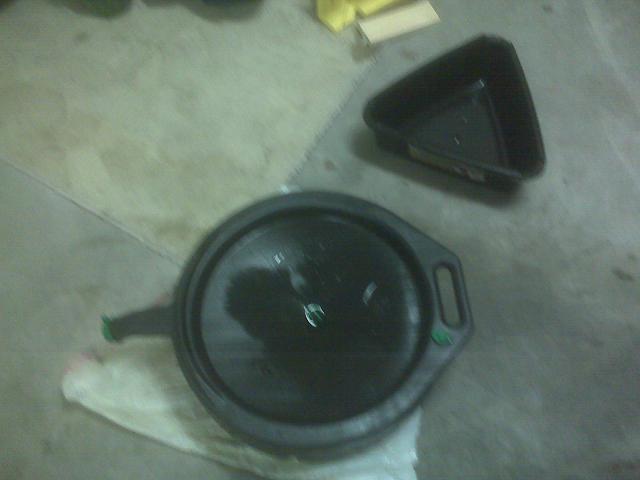
You may want to remove the radiator cap now to relieve some pressure. Better to do this when the engine has cooled. Loosen the lock bolt, remove it, and then turn the radiator cap counterclockwise until it stops. If the engine was warm you should hear a hiss of the pressure releasing from the radiator cap. If the engine is warm do not remove the radiator cap unless you heard this hiss. Wait till its cool enough to do so, then remove the radiator cap itself by pushing down and turning counter clockwise like you would a childproof aspirin bottle. By the way, I noticed by looking at a friend's FZ6 his radiator lock bolt was slightly different than mine--different year, different style. This is an 04.

Drain the coolant by loosening the coolant drain bolt on the water pump. Make sure you dispose of the coolant in a properly labeled container and store up high away from children and animals until you have properly disposed of it--check your local regulations. This stuff is poison but tastes sweet.
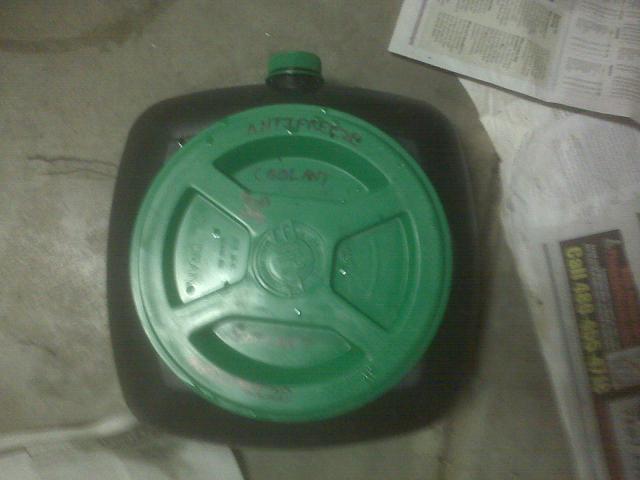
Remove the cowling panels from each side of the handlebars and the seat. This is 1 phillips screw and usually two allen wrench bolts for each cowling. For me it's easiest to turn the handlebars towards the direction of the cowling I am removing. For the seat, I have to use my keys.
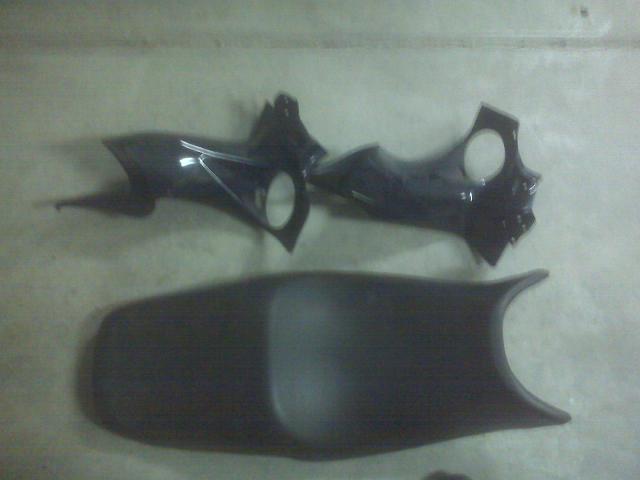
You may not have to do this if you have a different year FZ6. Noticed that on my friend's FZ6, his coolant reservoir tank was in the front by the radiator, whereas mine is under the fuel tank. Remove the fuel tank allen wrench bolts and washers (one size bigger than the cowlings). Picture shown here with one removed.
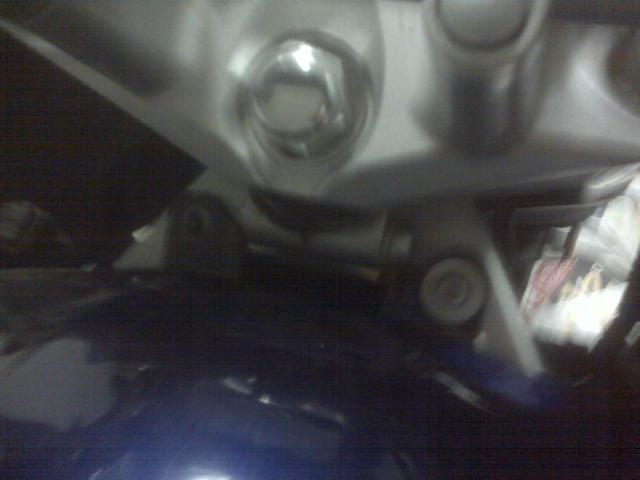
Drain your coolant reservoir by using a turkey baster to extract the fluid. It's just a pop off cap and you can place the hose on a paper towel or something, being careful not to leak coolant on anything, it might damage the paint. Later on, I filled the coolant reservoir with distilled water repeatedly and swished around to flush the coolant reservoir. I don't recommend using a garden hose, but a friend of mine feels it would be fine. Any more experienced comments on this out there? I also recommend flushing your cooling system with distilled water later on before refilling it with coolant.

Now is where things start to get fun and interesting. Time to remove the exhaust pipe headers upper assembly from the engine block. I had a little difficulty removing the exhaust pipes and just had to shake it gently until it finally came loose. Some parts of it seemed a little baked on. There are two bolts for each gasket seal on your inline four.
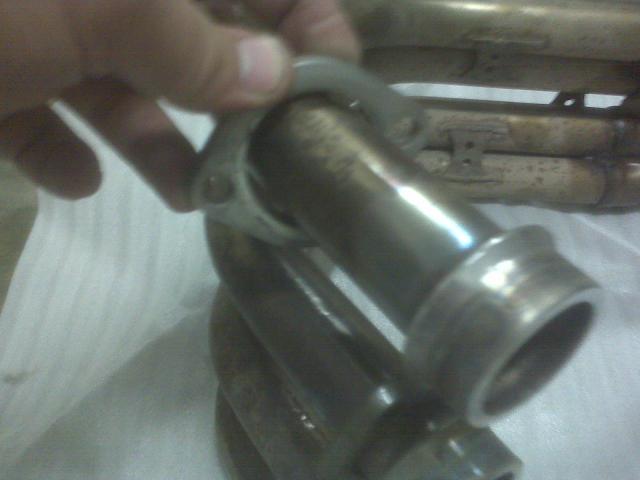
Here is what your engine block will look like after removing the seals. Some old copper gasket seals should fall out. If not, remove them..

You will definitely need to replace the old copper gasket seals with new ones later on.

To Be Continued...
At various points you will need to put your bike up on the center stand. You will find that some of these steps it is easier to have your bike on the regular kickstand for access, while most of the other steps it is best if your bike is on the center stand.
First, drain your oil by placing the proper container underneath your drain bolt and loosening it. This is best done when the oil is a little warm but be extremely careful that you do not burn yourself (been there, done that). Assumed you did this already and that you overtightened the drain bolt and that is why you are replacing the oil pan. Dispose of the oil in a proper container and take to your local Autozone.

You may want to remove the radiator cap now to relieve some pressure. Better to do this when the engine has cooled. Loosen the lock bolt, remove it, and then turn the radiator cap counterclockwise until it stops. If the engine was warm you should hear a hiss of the pressure releasing from the radiator cap. If the engine is warm do not remove the radiator cap unless you heard this hiss. Wait till its cool enough to do so, then remove the radiator cap itself by pushing down and turning counter clockwise like you would a childproof aspirin bottle. By the way, I noticed by looking at a friend's FZ6 his radiator lock bolt was slightly different than mine--different year, different style. This is an 04.

Drain the coolant by loosening the coolant drain bolt on the water pump. Make sure you dispose of the coolant in a properly labeled container and store up high away from children and animals until you have properly disposed of it--check your local regulations. This stuff is poison but tastes sweet.

Remove the cowling panels from each side of the handlebars and the seat. This is 1 phillips screw and usually two allen wrench bolts for each cowling. For me it's easiest to turn the handlebars towards the direction of the cowling I am removing. For the seat, I have to use my keys.

You may not have to do this if you have a different year FZ6. Noticed that on my friend's FZ6, his coolant reservoir tank was in the front by the radiator, whereas mine is under the fuel tank. Remove the fuel tank allen wrench bolts and washers (one size bigger than the cowlings). Picture shown here with one removed.

Drain your coolant reservoir by using a turkey baster to extract the fluid. It's just a pop off cap and you can place the hose on a paper towel or something, being careful not to leak coolant on anything, it might damage the paint. Later on, I filled the coolant reservoir with distilled water repeatedly and swished around to flush the coolant reservoir. I don't recommend using a garden hose, but a friend of mine feels it would be fine. Any more experienced comments on this out there? I also recommend flushing your cooling system with distilled water later on before refilling it with coolant.

Now is where things start to get fun and interesting. Time to remove the exhaust pipe headers upper assembly from the engine block. I had a little difficulty removing the exhaust pipes and just had to shake it gently until it finally came loose. Some parts of it seemed a little baked on. There are two bolts for each gasket seal on your inline four.

Here is what your engine block will look like after removing the seals. Some old copper gasket seals should fall out. If not, remove them..

You will definitely need to replace the old copper gasket seals with new ones later on.

To Be Continued...
Last edited:

